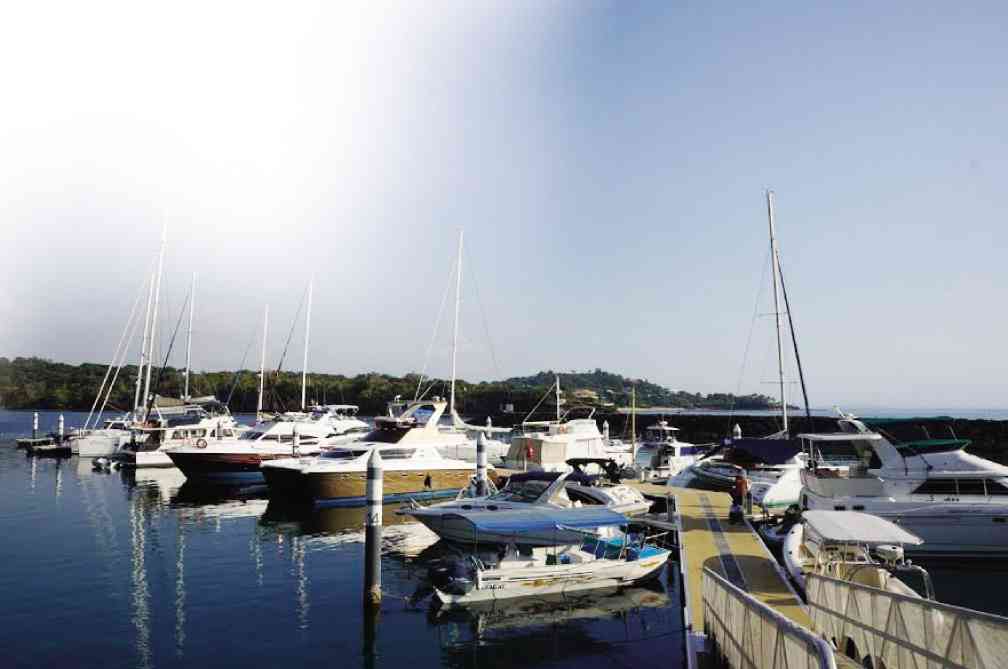
THE LOCAL boating and marina development sector remains an emerging market, which experts say can become a strong contributor to the country’s economic growth in the future but whose potential has been barely tapped by investors and the local government.
The Philippines has the third longest coastline in the world. Yet, the country has not been able to take advantage of a seaside even longer than that of the continental United States.
At least, that’s how experts from various fields see it.
“Waterfront developments have high-amenity value and create greater value for communities. Of course, there will be questions about [their vulnerability to] tsunamis and storm surges. Right now, we are master planning for tourism for the whole of Ilocos Norte and San Vicente in Palawan [after finishing with the Hundred Islands], we’re working on about 25 islands in Palawan. We see a lot of potential, as long as we do adaptive architecture and adaptive engineering. After determining the highest flood line, and the possibilities of tsunamis and storm surges, we can apply adaptive architecture/engineering,” said renowned urban planner and architect Felino Palafox.
He asserted that more amenity values can be created by developing marinas and the boating industry.
Fortifying boating industry
Palafox spoke during a roundtable discussion held on Jan. 28 at the Intercon Hotel. The discussions revolved around developing the country’s extensive coastal and marine property resources, and strengthening the local boating industry.
AS SOMEONE who has been in the boating industry for more than a decade already, Angelo Olondriz says that the maritime industry should be one of the strongest economic backbones of every country in Asia, particularly for an archipelago of 7,107 islands like the Philippines.
Palafox stressed: “We are No. 1 in the world in producing world-class, highly skilled sailors; we overtook the Greeks. We are now No. 4 in shipbuilding. So many overseas Filipinos work in the hotel, tourism and leisure industry. Imagine creating that great industry here, they would definitely come home and be with their families instead. There’s a lot of social benefits in bringing back our Filipino expats.”
Angelo Olondriz, president of Headsail Inc., said that in a country of 7,107 islands, the maritime industry should be a strong backbone. “It’s simple. The diving industry is very strong in the Philippines, but the key components to this activity are the boats and coastal resorts. It’s the same as looking at it from the transportation perspective, how to get people from island to island.”
Martial Beck, vice president and general manager of the European Chamber of Commerce in the Philippines (ECCP), said: “When we talk about this potential of marina development and what it means for employment, for creation of wealth, attracting hotels, resorts and restaurants in the area where the marinas will be built, the sea is one major asset, as with the rivers, and lakes, and all other bodies of water. We’re not using those sufficiently for transportation. In Europe and in the States, they do that.”
Olondriz added: “The government needs to understand the importance of this industry in generating tourism activity, a safe transportation for our tourists. We are not landlocked like Switzerland. We have to move people over the water, and there’s only one way to do that aside from flying.”
Right now, Olondriz observed that the Philippines lags far behind in its coastal developments. He said: “If I were to freight something in the Philippines by land, say a 31-foot boat via roll-on roll-off (Roro) ferry from Manila to Davao, the transportation quote I get would be half-a-million pesos. It costs me half of that to move the same cargo from Europe to the Philippines. So, it’s crazy. That shows how our maritime industry is so behind. If it’s behind already in commerce, what more in terms of tourism?”
Palafox sees an “enormous amount” of opportunity, however. “But we really have to address the challenges. We can learn from some of the best practices in the world, like the marinas in Europe, the Mediterranean, in North America and in the Middle East. It is so right for the Philippines today.”
Of global standards
Beyond getting the country’s marinas and coastlines up to par, the roundtable discussions offered a glimpse of the future: floating cities—boathouses and live-aboards—were also discussed. Palafox cited Paoay Lake in Ilocos and Laguna Lake as prime examples of the country moving ahead of global standards. Manila Bay, Palafox envisioned, could have floating cities. Brand architect Amor Maclang shared her personal industry experience: “If you go to Ecuador or Galapagos, and ask to stay in a land-based hotel, they’ll look at you like you were environmentally unfriendly. They’d ask, ‘Why would you stay in a landlocked resort?’ Staying in a boat is more environmentally sound, and you can visit more islands and destinations.”
Palafox clarified that floating cities in Manila Bay, Laguna Lake and other bodies of water should still be installed with proper sewerage, utilities and recycling facilities.
Olondriz is currently promoting SEA-EX, the country’s boat show and premier nautical lifestyle expo spearheaded by Headsail and the ECCP, and will run from Feb. 20 to 22 at Hall 1 & 2 of the SMX Convention Center.